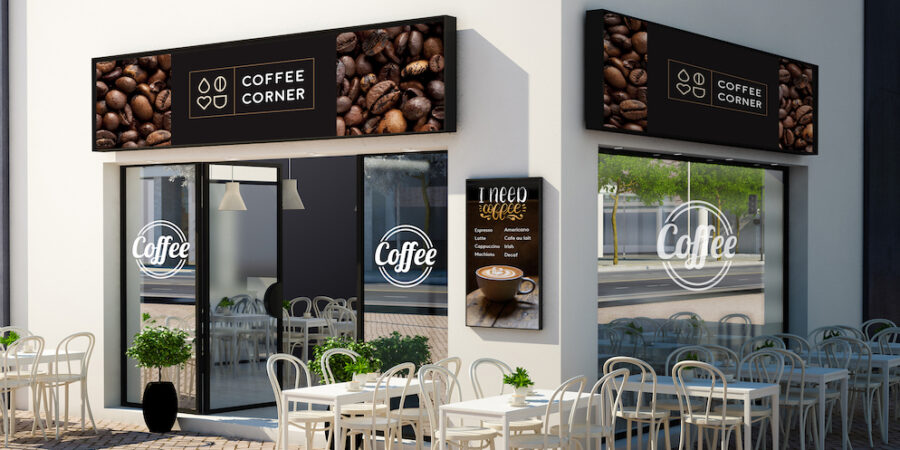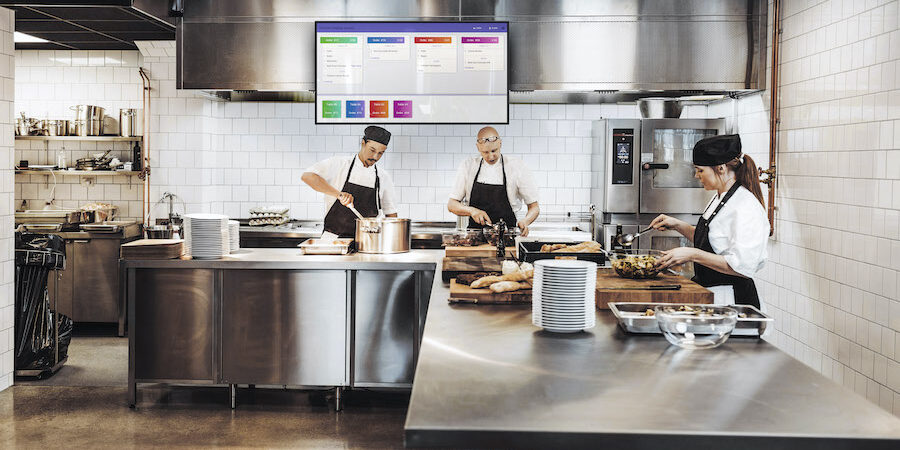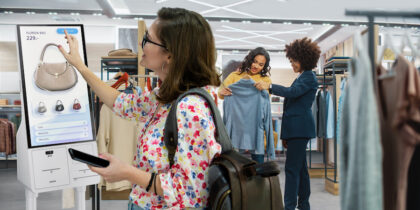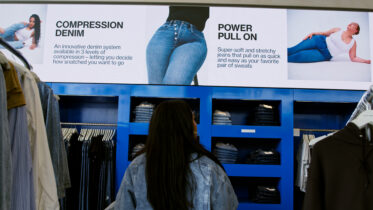Curbside pickup is flourishing as consumers prioritize convenience and solutions that make their lives easier. For retailers and food and beverage operators who implement on-premises digital technology, such as digital screens, menu boards and self-service kiosks, curbside pickup is also a win-win.
On the consumer side, it lets them take greater control of their pickup order and save money, which is all the more appealing as delivery fees rise, especially if their orders don’t qualify for free shipping. For merchants, enabling shoppers to collect their own merchandise cuts down on their fulfillment costs. Curbside pickup offers other key benefits to retailers and quick service restaurants (QSRs), too, by driving traffic to their locations and encouraging additional purchases.
Changing consumer habits
As consumers increasingly choose curbside pickup for its convenience and speed, they underscore why it’s an ideal time for retailers to implement or expand curbside pickup to improve the customer experience. This can include digital displays and self-service kiosks to guide and improve the shopper journey.
This is key, as shopper behavior and expectations have altered dramatically, according to a McKinsey podcast. There’s been a drastic evolution in self-service, notes McKinsey retail expert Tiffany Burns, something reflected in grocery and department stores, where self-checkout has replaced a shopper’s traditional interaction with a sales associate, for example. The same goes for airports, which include self-service kiosks to check in for the flight and check your bag.
This translates to curbside pickup, too. PYMNTS research found that nearly one-third of U.S. e-commerce shoppers picked up their most recent online orders via in-store and curbside pickup in 2022, a 37% increase from 2021. That number increases among younger generations, with Statista data showing around two-thirds of millennial consumers in the United States prefer curbside pickup for their online purchases. The retailer benefit is huge, too, with research by Pollen finding curbside pickup technology drives an additional buy-up rate of up to 45%. That means nearly half of customers who arrive to pick up an order will add last-minute items, as well.
Elevate your QSR by empowering employees
Explore how key technologies can help QSRs stay competitive and mitigate growing industry problems. Download Now
In-store messaging
Retailers and QSRs need to adjust their logistics to accommodate curbside pickup and deploy outdoor LED signage and in-store screens to guide the shopper journey. They can also leverage digital displays to market and promote their curbside pickup services and showcase the cost-saving benefits to their customers.
Samsung All-In-One IAC is a great example. The video wall display provides the ultimate, large-scale viewing experience for retail and QSR environments. Operators can implement video walls to promote their brand and create experiential in-store theater for curbside pickup shoppers and to promote new product launches and offers. Retailers who use digital signage technologies to communicate these changes also project a more professional and modern image for their brand, which benefits further from the ease of updating their messaging regularly.
Interactive touchscreen displays, such as the Samsung Windows Kiosk Touch Display, can assist with those additional purchases made by curbside pickup shoppers by providing them with all the information they need to make an informed purchase and complete the transaction at their own pace.
Brand consistency
Digital displays and signage help retailers and QSRs achieve brand consistency from online to the physical store. This is crucial as McKinsey shows omnichannel customers shop 1.7 times more than single-channel shoppers and spend more. That means consistency and connectivity between all those channels are extremely important, both in creating a cohesive brand image and message at all touchpoints and a smooth customer journey on all platforms.
Outdoor-ready digital displays can be especially helpful at doing that by driving customer awareness of pickup services, guiding shoppers through the process, suggesting add-ons, and displaying notices to update shoppers on their order status.
Display management
Samsung VXT, a cloud-based content management system (CMS), helps retailers and QSRs unlock the potential of their displays. As an intuitive CMS, content can be created and managed seamlessly across a variety of locations and devices from anywhere around the globe, enabling a more flexible and efficient operation with fast setup and remote management. Employees can easily develop and deploy content with no previous training. Deploying VXT CMS, retailers and QSRs can bring in-store shopping to life for curbside pickup customers with dynamic, digital content, engage shoppers, and sell more with vivid and vibrant menus.
A good example is queue management. Widely used in waiting rooms and checkout areas, queue management technology can be adapted for curbside pickup. High-brightness window displays can show people their wait status, whether they pick up curbside or in-store. The screen notifies them when their orders are ready for collection — and doubles up with marketing messages. They can also help generate foot traffic, boost sales and project a higher level of customer service.
Looking to the future
As the consumer appetite for curbside pickup accelerates, retailers and QSRs should implement curbside pickup technology and digital displays to facilitate and improve the customer experience.
With 52% of digital grocery sales involving pickup and 41% of U.S. consumers stating it was their preferred method when ordering takeout, there’s a high consumer preference for curbside collection. Furthermore, now that 54.7% of retail chains now offer curbside pickup, it may hurt your brand — and sales — to not. As such, smaller operators should get on board and meet consumers’ growing expectations for convenience, thrift and speed.
Learn more about the rise of self-service and how it’s reinventing customer service. Also, explore this free white paper on how technology can help QSRs improve their bottom line.








